In this post-pandemic period there are those who located the relevance of family, the importance of (often overlooked) quotidian art approaches, and how to stay busy. Olivia Zubko is one such artist. What is even more appealing is how, in youth, she is expanding dialogues in contemporary ceramics. This week the Comp Magazine ran out to Humboldt Park to discuss with Zubko the role artifacts created by her grandmother have played in informing her aesthetic investigations, how the pandemic influenced her working practice, her ability to cloak aspects of tactile process, and how she is preparing for her upcoming show at Cleaner Gallery & Projects opening in September.
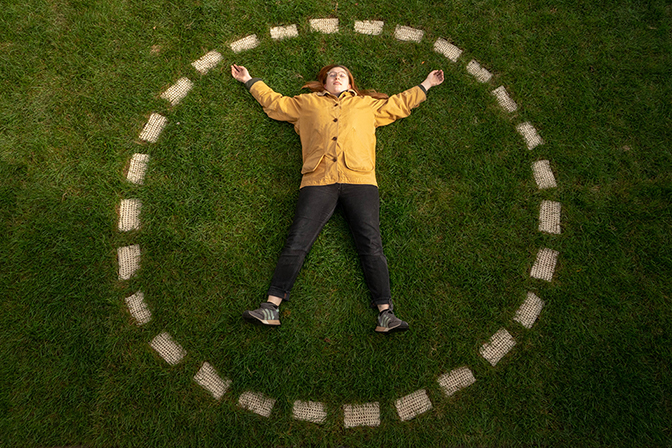
Can we backtrack a bit to discuss what prompted you to pursue a career as an artist? In conversation and researching your work, your family history and the items your grandmother and great-grandmother made have an impact on your work. Can you elaborate on this observation?
Family history and handmade objects have been incredibly impactful on my work. My maternal grandmother died almost 20 years before I was born, so I never knew her, but I’ve come to know her incredibly well through the things she made. She was an expert in many different areas of domestic craft, especially, knitting, crocheting, and sewing and was very prolific. In the basement of my childhood home, we have a large storage space filled with boxes of her handmade items, supplies, books, collections, and personal belongings. This has become somewhat of a seemingly endless supply of source material to be inspired by, react to, intervene with, and transform. The thing that was most striking to me was the unfinished projects. There was an undeniable heaviness to them, knowing that one day she set the project down, intending to finish it later, but never did. I began to approach this space as a sort of pseudo-archaeologist, interested in the lifecycles of these objects and belongings.
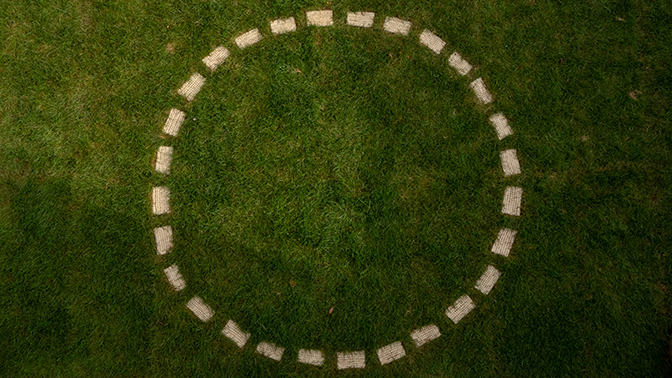
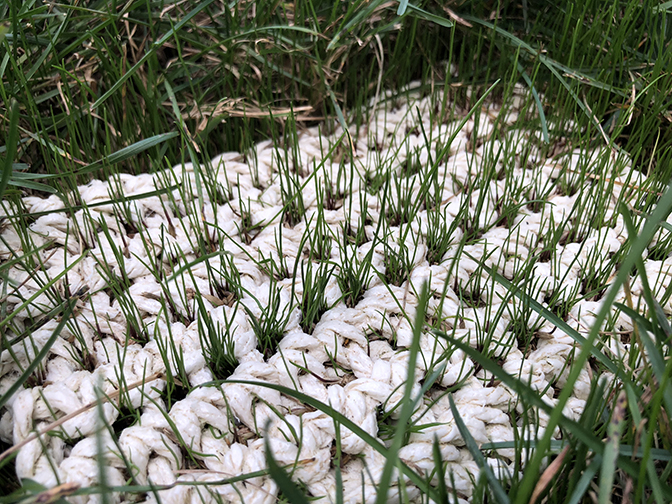
I love the landing page image at your website. I believe this is from 2020 at the height of the Covid-19 pandemic. Also, this was the year you completed your BFA from Northern Illinois in sculpture. Can you describe this work and how the pandemic influenced your process?
That image actually comes from just before the pandemic, autumn of 2019. Sort of the “calm before the storm”, to be perfectly cliche. I am lying in the center of an installation I made for the 2019 Terrain Biennial. The work was inspired by ancient and mysterious archaeological sites such as Stonehenge, the Nazca Lines, and the colossal stone spheres in Costa Rica. It’s interesting to reflect back on this piece about ancient human history which came just before such a significant event in modern human history.
I did complete my BFA in 2020, in fact, we basically went on spring break and never went back. This certainly presented its fair share of challenges and disappointments but I tried my best to take it as a change of pace and embrace the improvisational nature of that period and it sent me in all kinds of new directions. There was, of course, the loss of access to studio facilities which was tough as a sculpture and ceramic artist but this was a problem I was to confront inevitably anyway. Initially, it gave me the opportunity to revisit some unfinished projects and ideas but I think the real outcome of making art at home by myself was the way that the work became more introspective and perhaps intimate. I think on some level it strengthened my relationship with myself as an artist.
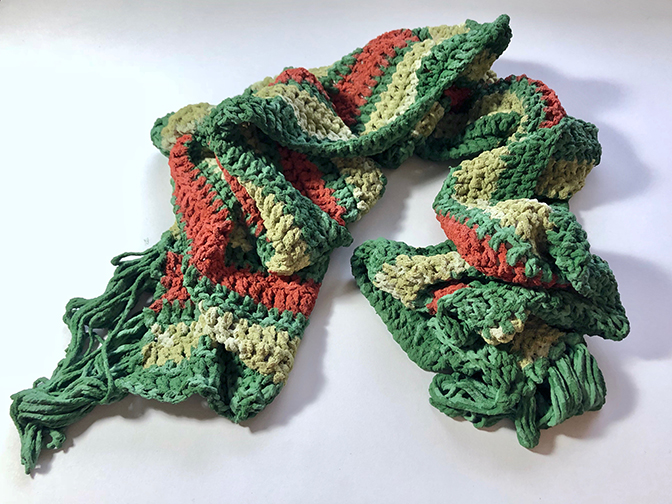
Upon initial inspection, I am drawn to “The Replica” series from 2020. The final form is in ceramics. Can you walk us through the process?
Pieces such as The Replica are made using a process where fiber material is saturated with slip (a mixture of liquid clay), left to dry, and then fired in the kiln, which burns out all of the fibers, leaving only incredibly fragile ceramic in the exact form of the sacrificed fiber piece. In my work, I often use this technique to mimic the natural process of petrification, where one material transforms into a completely different material. I like to think of the objects as being somewhere in between a fossil and an artifact- handmade and biological. I also play with the conundrum of creating an iteration of something warm and soft that is almost too fragile to touch. Ceramic is one of the most archival materials that exists but can also be so fragile and vulnerable and, in my work, I tend to push the limits of its vulnerability.
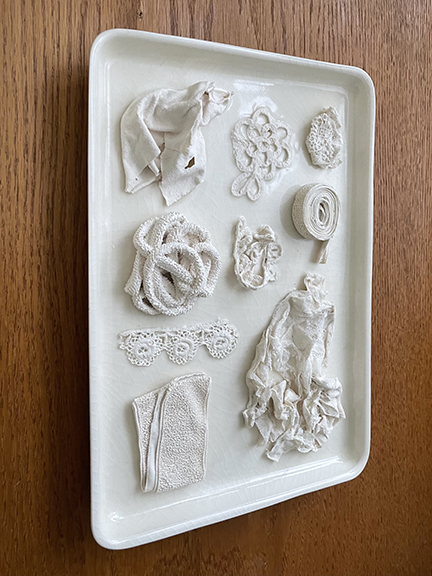
You are now 2-years out of an academic setting. You have setup a productive studio practice. As a young artist, what do you see as being some of the loftiest challenges in the present?
Immediately after graduation, the big challenge was to find a way to continue making art outside of an academic setting. I was incredibly lucky to not have to worry about that for too long, as I found a great studio space in Chicago and a place to fire my ceramic work. Presently, my greatest challenge is to motivate myself to do all of the ‘non-making’ tasks related to being an artist and a member of the art community such as, applying to residencies, attending shows/events, and other more administrative types of things.
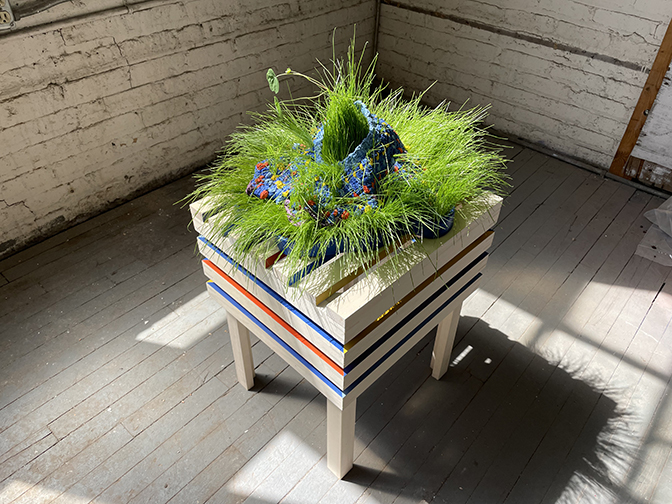
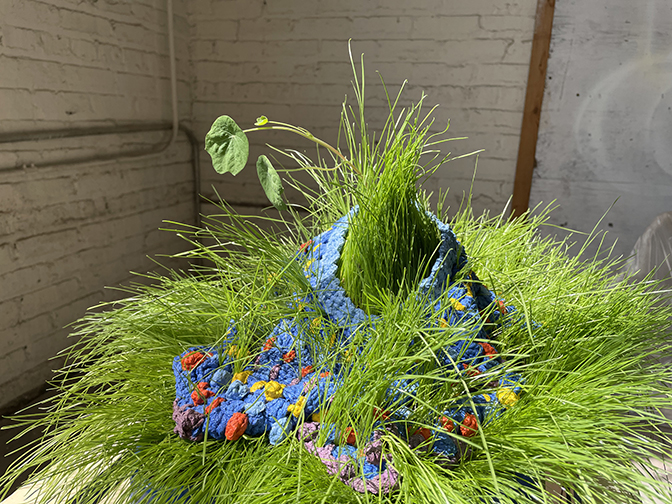
What do you value most in your aesthetic practice?
I value the incredible privilege it is to make art and have a studio where I can create and explore new ideas every day. I try my best not to waste a single minute of this privilege and make a point to be in the studio as much as my work schedule allows. I value my triumphs and failures as both are informative and propel me onward in my practice. I also highly value my relationship with the materials I use, especially clay, and its ability to be what I need it to be in order to express my ideas.
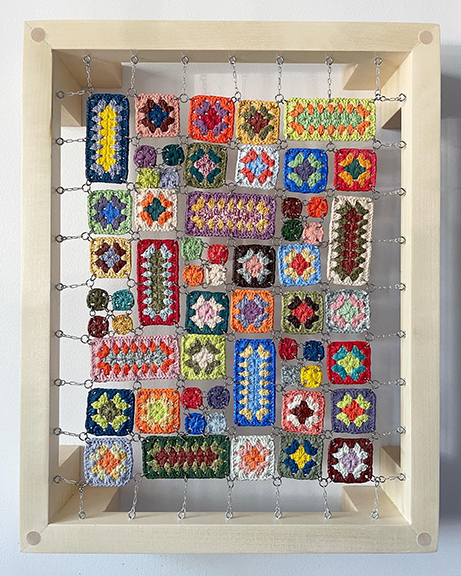
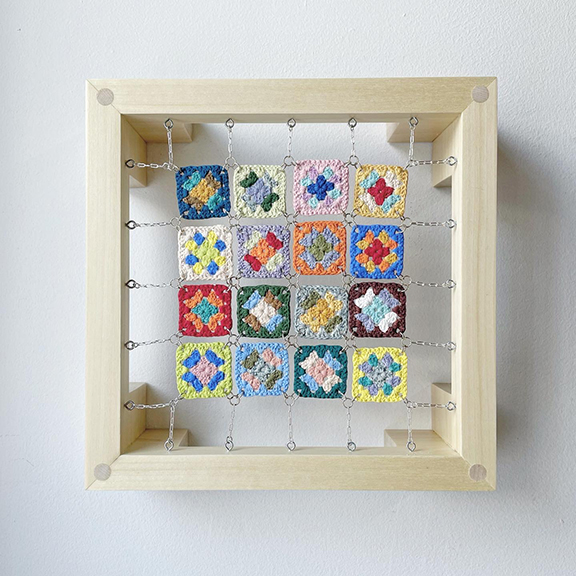
In recent time, you indicated a shift in your work. What prompted this? Can you define this transformation?
Over the past year I’ve been producing a body of work that is thematically centered around the bathroom, using cast copies of fixtures and other found materials to create sculptures that call upon the viewers memories and associations with this private and intimate space. I had ventured into this theme briefly a couple of years ago when I made a series of extremely opulent and gaudy cast porcelain menstrual cups. I was thinking a lot about how menstrual cups are these incredibly elegant and functional design objects that are extremely personal and only the user ever really sees it. I was pondering the intimate relationship between that object and the body which eventually grew into a larger exploration of the relationship between the entire space of the bathroom and the body.
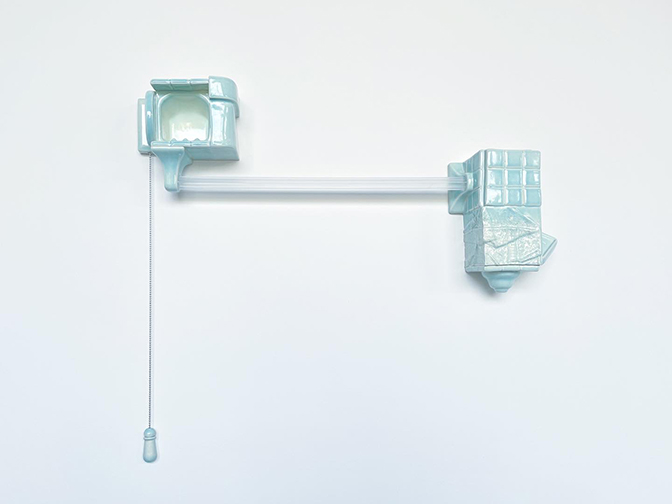
I feel that the bathroom, psychologically, is such a complicated space that is very rich with associations. Maybe you have vivid memories of being in a bubble bath as a child, or being very ill, or escaping to the bathroom during a social gathering to spend a moment alone. The associations are endless and based on personal experience but the bathroom is the landscape. It’s a space that can be so important in daily rituals, personal intimacy, and “self care”. It can be simultaneously familiar, distant, public, intimate, safe, unsafe, sterile, or emotional. I want the viewer’s experience with this body of work to be contingent on their own personal memories and individual narratives.
Most of the pieces in this body of work are compound objects made up of both vague and familiar elements from the bathroom. I find that the more the objects merge and interact, the more they relate to the human form. Gentle gestures in porcelain and stoneware create objects that are as strange, beautiful, and awkward as the body itself.
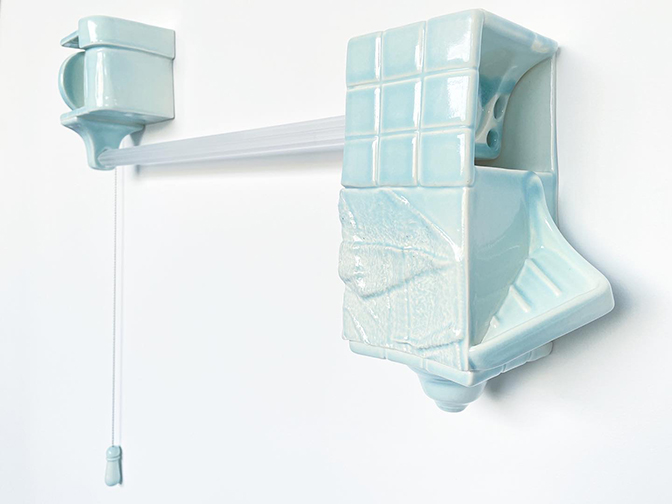
You are currently preparing work for a show this fall at Cleaner Gallery & Projects here in Chicago. Without revealing any spoilers, can you offer a summary of what’s in store?
My show, Necessarium, opens on Friday September 16th at Cleaner Gallery in Chicago and will feature a selection of my most recent work thematically centered around the intimate space of the bathroom. The title, Necessarium, is a word that pretty literally means “things that are necessary” but is also a very old fashioned and polite term for restroom. And what gallery could be more perfect to host this show than one called “Cleaner”?!
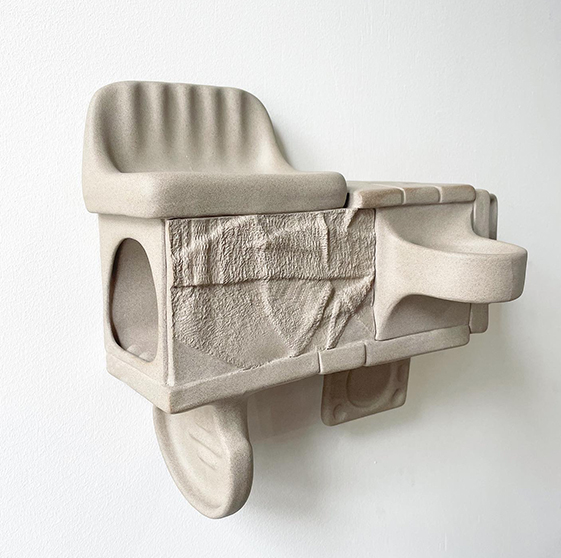
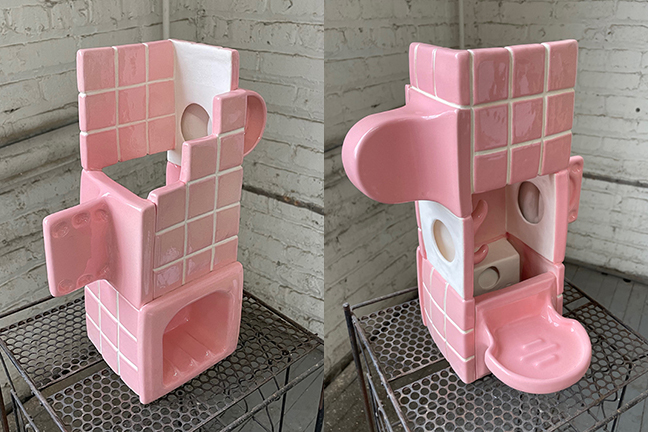
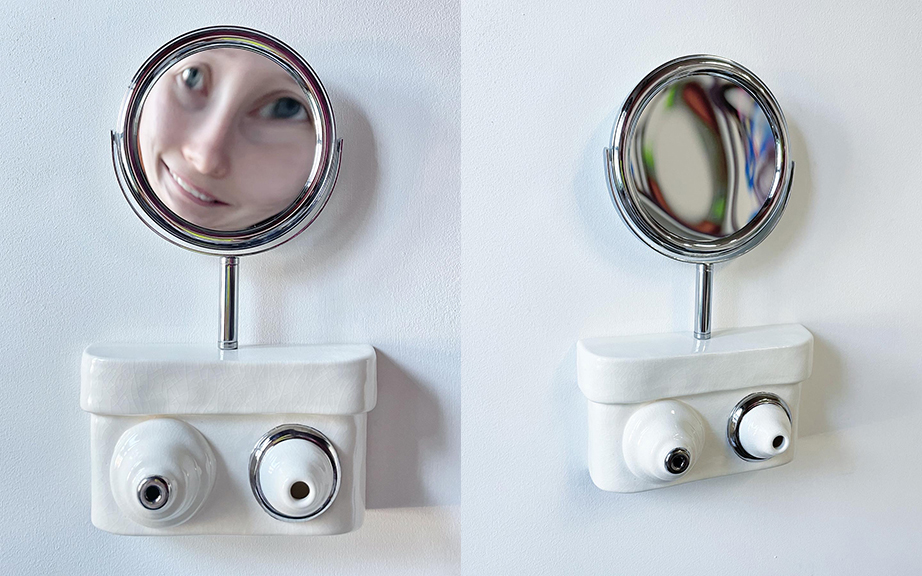
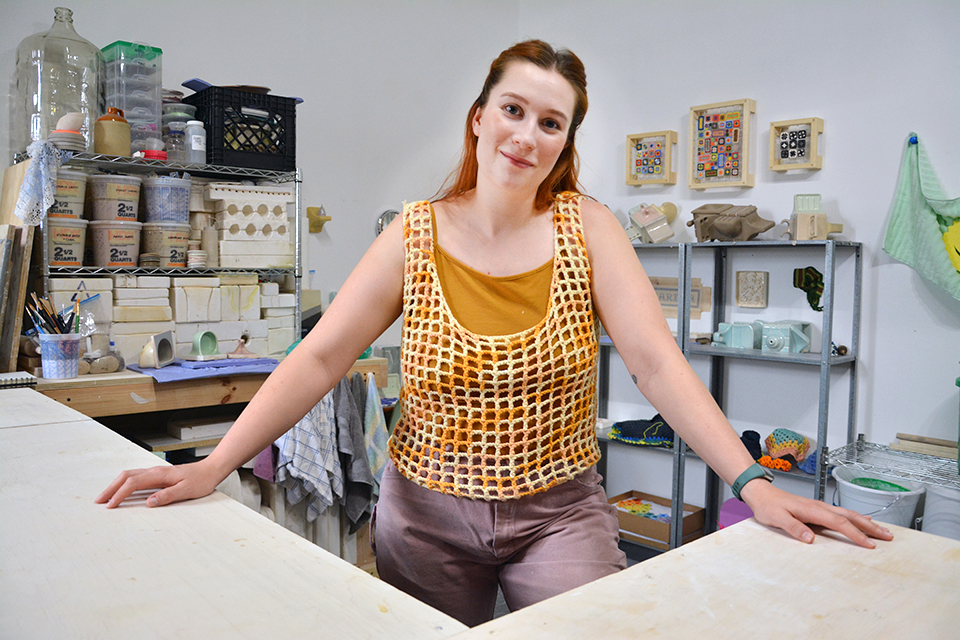
For additional information, please visit:
Olivia Zubko – https://www.oliviazubko.com
Olivia Zubko on Instagram – https://www.instagram.com/oliviazubko/?hl=en
Terrain Exhibitions – https://terrainexhibitions.org/dekalb-il
Voyage Chicago – http://voyagechicago.com/interview/meet-trailblazer-olivia-zubko/
Cleaner Gallery & Projects – https://www.cleanergallery.com
Writing and portrait by Chester Alamo-Costello


